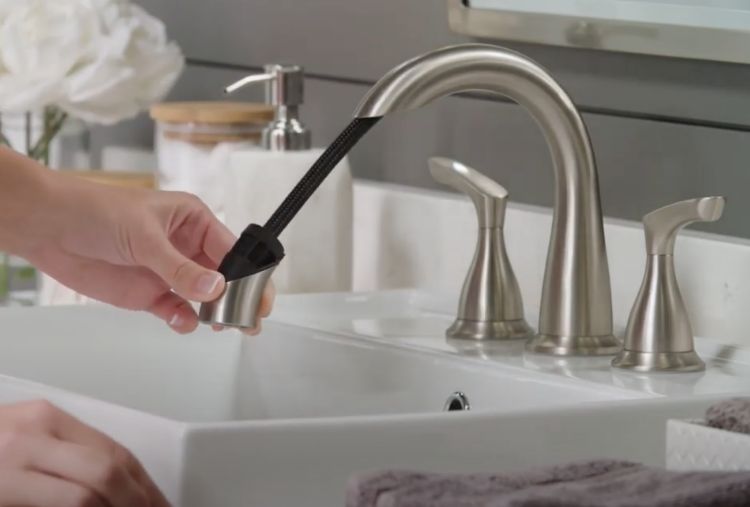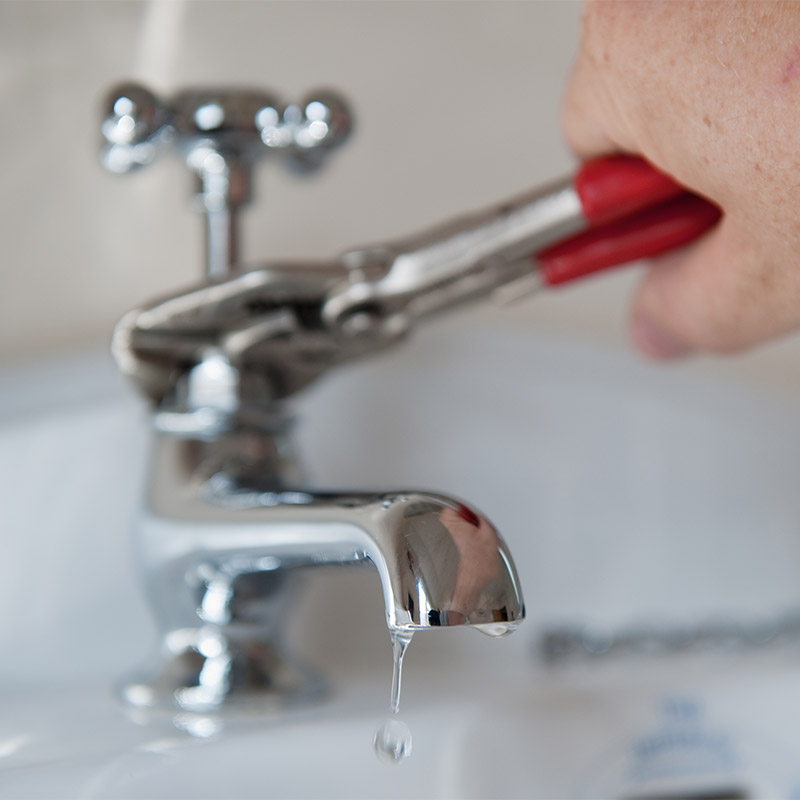Our Reasons Behind Dealing with a Dripping Faucet
Our Reasons Behind Dealing with a Dripping Faucet
Blog Article
We've noticed this article about Why Is It Important To Fix Your Leaking Tap/Faucet? down the page on the internet and believe it made perfect sense to relate it with you in this article.

Leaking faucets may look like a minor hassle, but their impact goes beyond just the annoyance of the audio. From drainage to sustaining unnecessary monetary expenses and wellness dangers, disregarding a trickling faucet can lead to different consequences. In this post, we'll delve into why it's important to resolve this usual house issue promptly and successfully.
Waste of Water
Environmental Effect
Dripping faucets contribute significantly to water waste. According to the Epa (EPA), a single faucet trickling at one drip per secondly can lose greater than 3,000 gallons of water each year. This not only strains water sources yet additionally impacts environments and wildlife dependent on them.
Step-by-Step Overview to Taking Care Of a Dripping Faucet
Tools Called for
Before attempting to deal with a leaking faucet, collect the needed tools, consisting of a flexible wrench, screwdrivers, replacement components (such as washers or cartridges), and plumber's tape.
Common Tap Issues and Their Solutions
Identify the sort of faucet and the specific concern causing the drip. Usual problems consist of worn-out washing machines, corroded shutoff seats, or malfunctioning O-rings. Refer to maker instructions or on-line tutorials for step-by-step advice on repair work.
Financial Prices
Boosted Water Costs
Beyond the ecological effect, trickling faucets can blow up water costs substantially. The built up wastefulness in time converts into higher utility expenses, which could have been avoided with timely repairs.
Prospective Home Damages
Furthermore, prolonged leaking can lead to damage to fixtures and surface areas bordering the faucet. Water build-up can create discoloration, rust, and also architectural issues if left unattended, leading to additional repair work prices.
Health Worries
Mold and Mildew Growth
The consistent visibility of moisture from a trickling faucet develops a suitable atmosphere for mold and mold development. These fungi not just compromise interior air quality however additionally pose health and wellness threats, particularly for people with respiratory system conditions or allergies.
Waterborne Illness
Stationary water in dripping faucets can come to be a breeding place for bacteria and other microorganisms, boosting the risk of waterborne conditions. Contaminants such as Legionella bacteria grow in stagnant water, potentially resulting in significant diseases when consumed or breathed in.
DIY vs. Expert Repair work
Advantages and disadvantages of Do It Yourself Repair Service
While some might attempt to repair a trickling faucet themselves, do it yourself fixings come with their own set of challenges. Without appropriate understanding and tools, do it yourself attempts can exacerbate the issue or bring about insufficient repair work, prolonging the trouble.
Advantages of Employing a Professional Plumber
Employing a professional plumber guarantees that the underlying cause of the leaking tap is dealt with efficiently. Plumbings possess the competence and tools to diagnose and fix tap concerns successfully, conserving time and lessening the danger of additional damages.
Environmental Duty
Specific Payment to Conservation
Taking obligation for taking care of trickling taps aligns with broader initiatives toward water preservation and ecological sustainability. Every person's actions jointly make a considerable influence on maintaining precious resources.
Sustainable Living Practices
By prioritizing prompt repairs and taking on water-saving practices, individuals add to sustainable living techniques that profit both present and future generations.
Preventive Measures
Normal Maintenance Tips
To avoid trickling taps, perform regular maintenance such as cleaning up aerators, inspecting for leakages, and replacing worn-out components quickly. In addition, consider installing water-saving gadgets or updating to more effective components.
Significance of Prompt Services
Dealing with trickling faucets as soon as they're discovered stops more water wastage and prospective damages, eventually conserving both water and cash in the long run.
Effect On Residential Property Value
Understanding of Well-Maintained Building
Maintaining a building in good condition, including attending to upkeep concerns like trickling faucets, improves its viewed worth and worth amongst possible buyers or renters.
Influence on Resale Worth
Properties with well-maintained plumbing fixtures, including faucets, command higher resale values in the real estate market. Dealing with leaking taps can add to a favorable perception throughout building inspections and negotiations.
Conclusion
Addressing a dripping faucet surpasses plain ease; it's an essential step toward conserving water, reducing financial prices, and guarding wellness and residential property. Whether with DIY repair work or professional assistance, doing something about it to take care of leaking faucets is a small yet impactful method to promote responsible stewardship of sources and add to a healthier, more lasting future.
How to Fix a Leaky Faucet: Step-by-Step Repair Guide
A leaky faucet may seem like a simple annoyance, but if it's not fixed promptly, that leak could cost hundreds to potentially thousands. From water damage to mold, mildew, and high water bills, even a tiny leak can be catastrophic if left unattended. Damage like this can even affect the overall value of your home, so it's important to take the right approach for leaky faucet repair. You may need the help of a plumber in some cases, but we've got a few tips you can try on how to fix a leaky faucet before calling the pros.
Four Faucet Types
When you're learning how to fix a leaky faucet, the first step is knowing what kind of faucet you're working with! There are four common types.
Cartridge Faucets
Cartridge faucets come in one- or two-handled varieties. In one-handled cartridge faucets, hot and cold water combines in a single cartridge. In the two-handled versions, hot and cold water are controlled separately and mixed in the faucet.
Ball Faucets
Ball faucets have a single lever you push up and down to adjust the pressure and rotate to change the temperature. A slotted metal ball controls the amount of water allowed into the spout.
Compression Washer Faucets
They're the oldest type of faucet, but they're still used in many homes — especially older ones. Compression faucets have two separate handles that, when turned, raise or lower the washer that seals a water valve. This valve stops water from flowing through the faucet when it is turned off.
Disc Faucets
Disc faucets rarely need to be repaired due to their maintenance-free design. The water flow is controlled by two discs — the upper one raises and lowers against a fixed lower disc, creating a watertight seal. If your disc faucet starts leaking, you may need to replace the seals or clean residue buildup from the inlets.
Fixing a Leaky Faucet
Step 1: Turn Off the Water
Whether you're learning how to fix a leaky bathtub faucet or how to fix a leaky kitchen faucet, always turn off the water supply to your working area when you're fixing a leak. The last thing you want is a flood added to your list of things to fix.
Look for the shutoff valves below your sink or around the tub and turn them clockwise to stop the water flow. If your faucet doesn't have shutoff valves, you may need to turn off the water for the whole house. Check to make sure it's off by turning the faucet on. If nothing comes out, you're ready to start the repair.
Step 2: Take Apart the Faucet
How you disassemble your faucet depends on the type of fixture you have. You can use a flathead screwdriver to remove the caps on top of the handle or handles for cartridge and compression faucets. Inside, you should see handle screws. Unscrew these with a screwdriver to remove the handle.
Disc- and ball-style faucets will typically have an inlet screw near the handle, and removing that will reveal the interior of the faucet.
Detach the Valve Stem
For cartridge- and compression-style faucets, you'll see the inner valve stem or cartridge once you remove the faucet handles. If you have a compression faucet, unscrew the brass valve stem. If you have a cartridge faucet, pull out the cartridge. If your cartridge has been in place for a while, it may require some tools or extra force to remove it due to mineral deposits.
Examine and Replace Parts
Once you've removed the parts, check them out to confirm what needs to be replaced. You may see corroded rubber washers, O-rings, stems, or cartridges. On a ball-style faucet, check the seats and springs for damage.
If you need to repair a leaky disc faucet, check the inlet and seals on the lower disc.
Once you determine what parts must be replaced, visit your local hardware store. Bring the damaged parts with you to ensure you can purchase the correct components to replace them.
Clean Valves and Faucet Cavity
If you've removed a stem or cartridge, you may notice mineral buildup in the faucet's threads. Use white vinegar to clean the valve seat by soaking it for a few minutes, then scrub it away with a soft toothbrush and rinse with warm water. You can also clean the interior of the faucet in the same way.
Reassemble the Faucet
Once your faucet is cleaned and the required parts have been replaced, it's time to reassemble it. Put the pieces back together and slowly turn the water supply back on. Doing this slowly is crucial because too much initial water pressure can damage the new hardware you've just installed.
https://homewarranty.firstam.com/blog/how-to-fix-leaky-faucet

I stumbled upon that content about Should I Repair or Replace a Leaky Faucet? when doing a search on the internet. Enjoyed reading our blog posting? Please share it. Let another person discover it. I am grateful for being here. Return soon.
Report this page